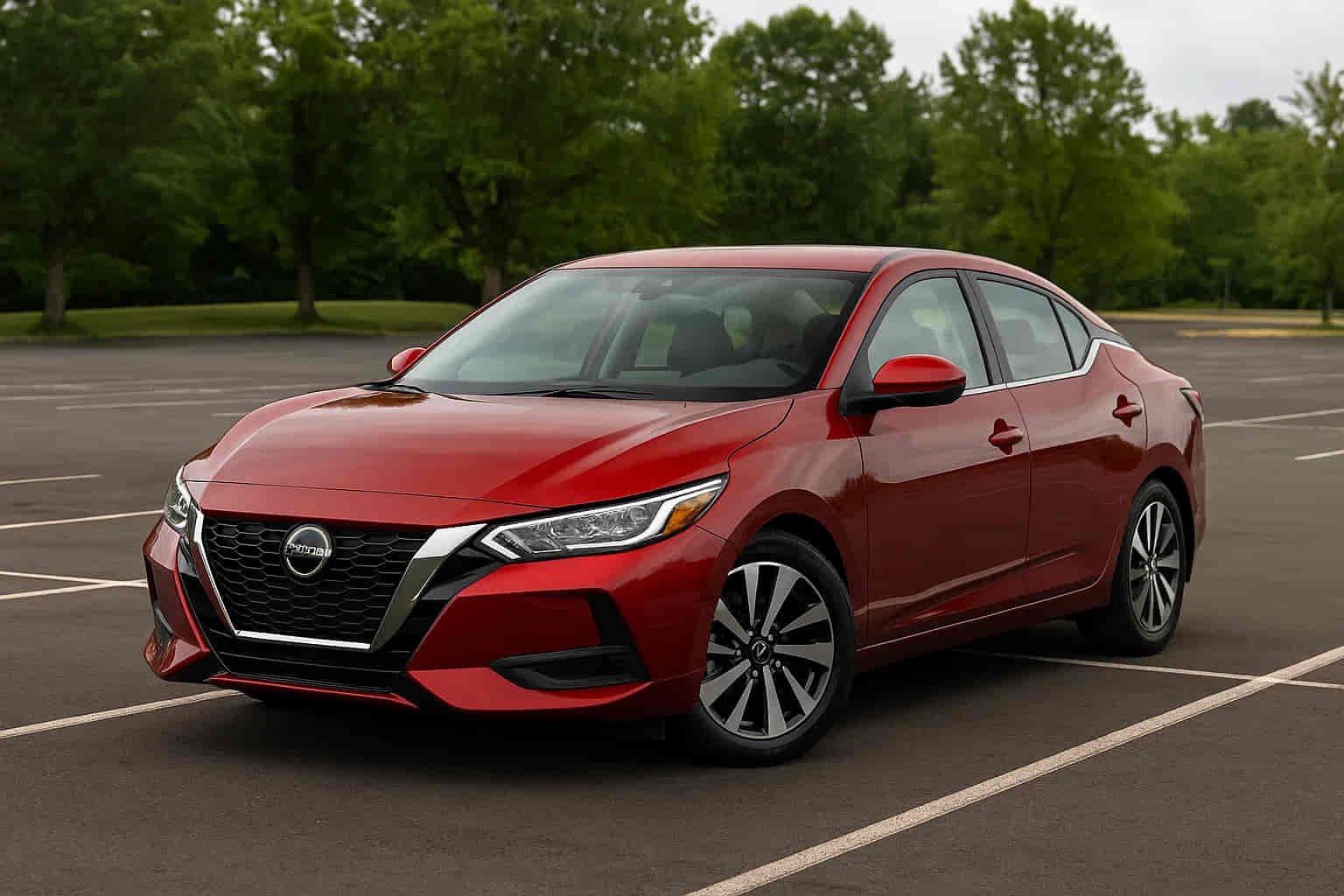When you are considering a compact sedan that balances affordability with daily practicality, the Nissan Sentra often comes to mind. It has been on the market for decades, promising fuel efficiency and a budget-friendly entry point for drivers who do not want to overspend on a vehicle. But behind the attractive sticker price, an important question lingers: are Nissan Sentras reliable for long-term use? This question matters not only for first-time buyers but also for families and commuters who expect a car to last beyond 150,000 miles without draining their savings on unexpected repairs.
Reliability is more than a marketing claim—it is about how the vehicle performs after years of ownership, how often it requires costly fixes, and whether it can compete with trusted rivals like the Toyota Corolla or Honda Civic. Some Sentra models have earned praise for durability and safety, while others faced criticism for transmission issues that raised doubts about their longevity. Understanding these patterns helps buyers make a more confident choice.
In this article, we explore real-world data, owner experiences, and expert insights to uncover whether the Sentra can be trusted as a long-term companion and what common problems you should be aware of before making a purchase.
Overall Reliability of Nissan Sentra
The reputation of the Nissan Sentra in terms of reliability has always been somewhere in the middle of the compact sedan segment. For many years, it has been seen as a sensible choice for budget-conscious drivers, offering a low entry price, good fuel efficiency, and comfortable daily driving. Consumer reports and owner surveys often describe the Sentra as “average to above average” when it comes to dependability. This means that while it is not known for exceptional durability like the Toyota Corolla, it is far from being a car plagued by constant breakdowns.
One of the Sentra’s strongest points is its affordability to own. Insurance, fuel economy, and routine maintenance costs typically stay lower than the segment average, which appeals to students, young professionals, and families looking for predictable expenses. Drivers often appreciate that the vehicle provides a quiet ride and decent comfort without demanding heavy upkeep.
However, the Sentra does not hold the same long-term reputation as its Japanese competitors. Some generations faced criticism, particularly in relation to transmission longevity, which slightly drags down its reliability score over the years. Still, with regular maintenance, most Sentras can reach well over 150,000 miles, proving that the model has the capacity to serve as a dependable companion for daily use.
Common Long-Term Problems with Nissan Sentra
While the Nissan Sentra has earned a reputation as a practical daily driver, long-term ownership reveals certain issues that buyers should be aware of. The most widely discussed concern revolves around the continuously variable transmission (CVT). Earlier Sentra models, particularly those from the mid-2010s, were notorious for CVT failures that often occurred well before 100,000 miles. Symptoms ranged from jerky acceleration to complete transmission breakdowns, sometimes requiring costly replacements that could exceed the value of the vehicle itself.
Electrical issues also surface among long-term owners. Problems such as faulty sensors, malfunctioning warning lights, or issues with the power windows and locks can appear as the vehicle ages. While not always critical, these smaller repairs add up over time and contribute to the perception that Sentras require more attention than some of their competitors.
Brake wear is another area where owners have reported frustration. In certain model years, brake components seem to wear out faster than expected, leading to more frequent replacements. Combined with suspension concerns in older vehicles, these issues can create a sense that the Sentra needs more ongoing care than its rivals.
Despite these concerns, many of these problems are linked to specific generations rather than the Sentra nameplate as a whole. Understanding which years to avoid and staying on top of preventive maintenance significantly reduces the risk of facing these long-term issues.
Maintenance Costs and Lifespan
One of the strongest arguments for choosing a Nissan Sentra is its relatively low cost of ownership compared to many other compact sedans. On average, annual maintenance expenses for the Sentra hover around 400 to 500 dollars, which is slightly lower than the segment’s median. Routine services such as oil changes, brake pad replacements, and tire rotations remain affordable, making it a practical choice for drivers who prioritize predictable long-term costs. Insurance premiums are also often lower for the Sentra, adding another layer of savings.
When it comes to lifespan, the Sentra shows respectable performance if it is cared for properly. Many owners report their cars lasting between 150,000 and 200,000 miles, provided that regular servicing is not neglected. For a vehicle positioned as an entry-level sedan, this is a solid figure, though it still falls short of the legendary longevity of models like the Toyota Corolla or Honda Civic, which often surpass 250,000 miles.
The key to extending the Sentra’s life lies in preventive maintenance. Addressing small issues early—especially transmission concerns—can make a dramatic difference in overall durability. Skipping routine service, on the other hand, may result in major breakdowns that not only shorten the car’s lifespan but also reduce its resale value. For buyers seeking a sedan that balances affordability with reasonable longevity, the Sentra delivers a fair compromise, provided expectations are managed.
Best and Worst Model Years for Reliability
Not all Nissan Sentras are created equal, and reliability often depends heavily on the model year. Buyers who are considering a used Sentra should pay close attention to these differences, as they can determine whether the car becomes a dependable long-term companion or a constant source of frustration.
The mid-2010s models, particularly from 2013 to 2016, earned a reputation for transmission failures that caused significant concern among owners. These years are widely regarded as the least reliable due to recurring CVT breakdowns and higher-than-average repair costs. Many owners reported needing major transmission work before 100,000 miles, making these Sentras a risky purchase for anyone looking at long-term use.
On the other hand, newer generations have shown noticeable improvement. Models from 2017 through 2019 received updates that helped reduce the frequency of transmission problems, while still maintaining the affordability and efficiency that make the Sentra appealing. The 2020 redesign introduced a sharper look, improved safety technology, and better overall build quality, setting the stage for even stronger reliability. Most experts agree that Sentras from 2022 onward are among the best choices for buyers today, offering both modern features and a more stable performance record.
For anyone shopping the used market, avoiding the troubled years and focusing on the later models can make all the difference. Choosing wisely ensures that the Nissan Sentra delivers the balance of value and dependability that buyers expect from a compact sedan.
Conclusion
So, are Nissan Sentras reliable for long-term use? The answer depends largely on the model year and how well the vehicle is maintained. While some generations—particularly those from the mid-2010s—suffered from costly transmission issues, later models have made significant improvements in both build quality and dependability. For budget-conscious drivers who want a compact sedan with affordable maintenance costs, solid fuel efficiency, and a lifespan that can comfortably reach 150,000 to 200,000 miles, the Sentra remains a sensible option.
Still, it is important to recognize that the Sentra does not enjoy the same reputation for bulletproof reliability as its closest rivals, the Toyota Corolla and Honda Civic. Owners who want peace of mind over many years of driving should be prepared to stay on top of routine servicing and choose their model year carefully to avoid known problem spots.
In the end, the Sentra can be a trustworthy companion if expectations are realistic and preventive care is prioritized. For anyone considering this car, the key is research: knowing which years to buy, which to avoid, and how to manage long-term maintenance. Have you ever owned a Nissan Sentra? Share your experience with its reliability in the comments below.

